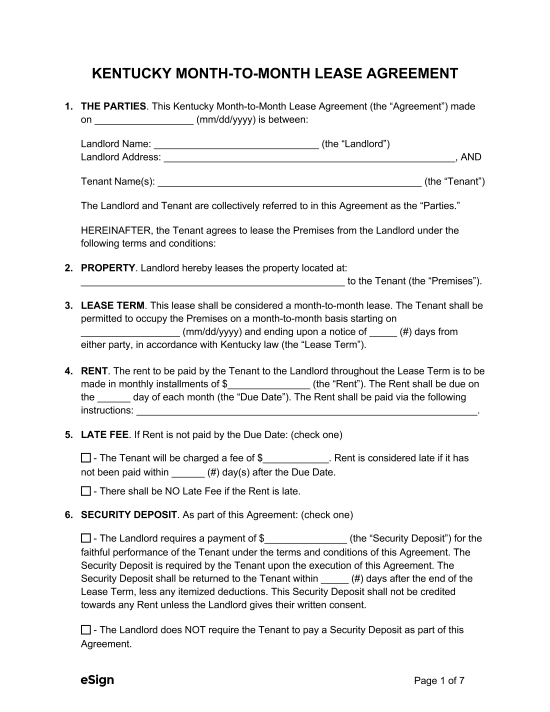Rental Application – Landlords renting out property to monthly tenants can use this form to make sure they are suitable for tenancy.
Month-to-Month Lease Laws
- Termination Notice – Landlords and tenants can terminate a monthly tenancy by providing 30 days’ notice.[1]
- Rent Increase Notice – Kentucky law does not specifically cover rent increases; 30 days is therefore expected.
Required Disclosures (4)
- Disclosure of Managers and Agents – The landlord is required to identify and give the address of the property manager and the property owner or their agent authorized to receive demands/notices.[2]
- Lead-Based Paint Disclosure Form (PDF) – If the rental property dates back to 1978 or earlier, the tenant must be given notice that there may be lead-based paint in their unit and on the premises.[3]
- Move-in/Move-out Condition Checklist (PDF) – In any tenancy where the tenant pays a security deposit, the landlord must give them a written account of the property’s condition and allow the tenant to verify the landlord’s assessment.[4]
- Security Deposit Disclosure – Security deposits must be kept in bank accounts designed for that sole purpose with the account location and number provided to the tenant.[5]

